
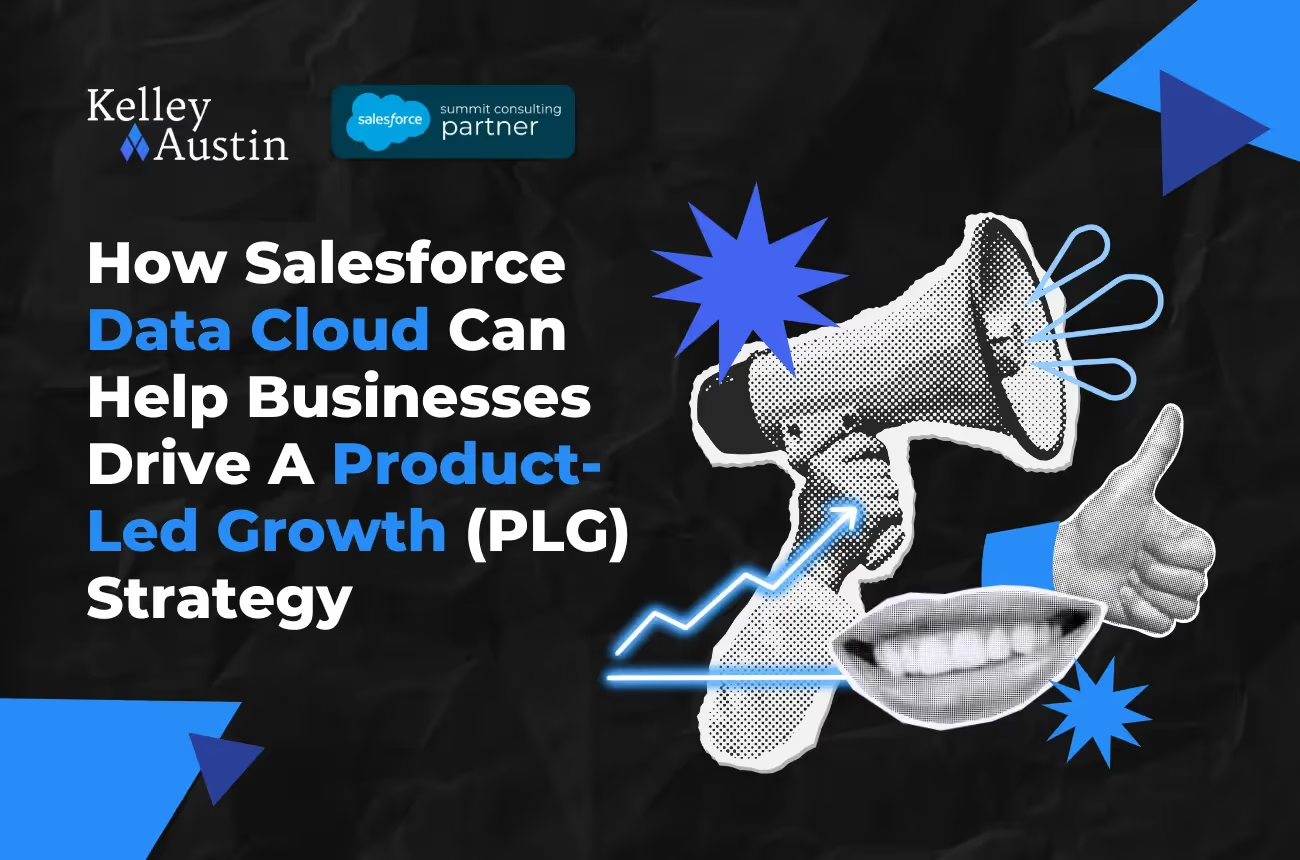
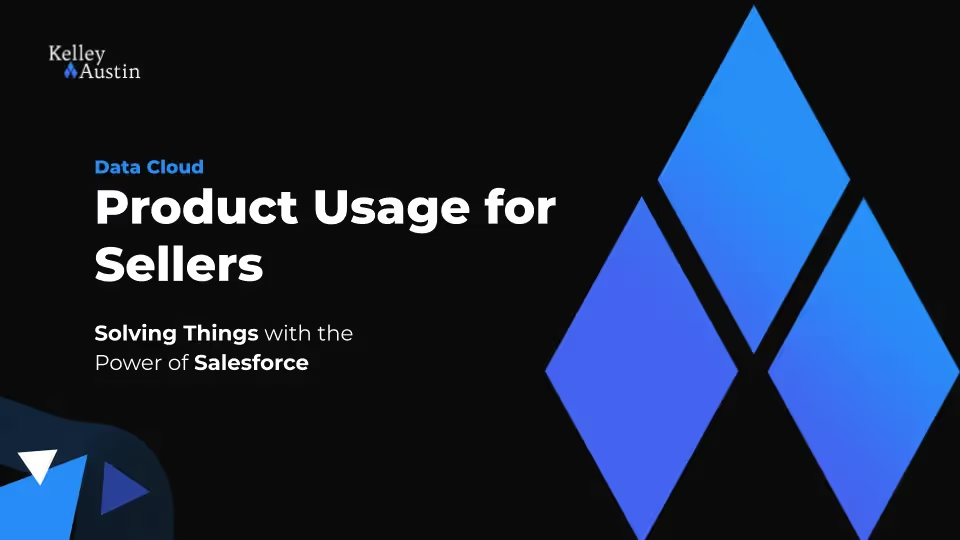
At its core, Product-Led Growth (PLG) is a business strategy where users start out with a useful and free version of the product. This version often lacks certain functionality and features to entice the user to upgrade to a paid version. The goal for many PLG companies is for the product to be so valuable that the user upgrades their plan and becomes an ambassador for the product.
With over half (53%) of buyers preferring no interaction with sales at all, companies that can adopt a successful PLG strategy can benefit from lower acquisition costs and more efficient marketing, sales, and service teams.
However many PLG companies face several challenges that can limit sustainable growth such as siloed data, Data Lake limitations, and IT bottlenecks. Salesforce Data Cloud offers powerful capabilities that can help PLG companies harness data effectively and drive positive outcomes across marketing, sales, and service.
In this blog post, we’ll explore how Salesforce Data Cloud can empower PLG companies to thrive.

Product-Led Growth is a business strategy where the product itself drives user acquisition, engagement, retention, and expansion. Think of companies like Zoom that gives users 40 free minutes for video calls before getting kicked off, or Canva that offers a free version but without certain templates and design elements.
Once you’ve had a good taste of the product, the goal is for you to upgrade to a paid or more expensive version because the product speaks for itself. Other notable companies built on a PLG strategy include Dropbox, Slack, Figma, Airtable, Calandly, and Notion.
Unlike traditional sales-led or marketing-led approaches, PLG focuses on delivering an exceptional product experience that encourages users to adopt, recommend, and expand usage organically. This approach often relies on freemium models, free trials, or product demos to attract users who can see the product’s value firsthand.

With more buyers preferring to self-educate, particularly when it comes to software-as-a-service (SaaS) companies, the PLG model has gained much more popularity in recent years.
Sales is still in the mix, but PLG allows the customer to find and buy products independently. The PLG customer journey is distinct in its emphasis on product experience at every stage:
With tech-savvy users demanding software that not only works great, but is also aesthetically pleasing and easy to use, PLG emerged in the B2B SaaS landscape to meet this growing demand.
By focusing more on the users themselves, PLG companies are able to showcase the product’s benefits in a more intimate way, thus nurturing user adoption and loyalty. Companies adopting PLG strategies often see:
Lower Customer Acquisition Costs (CAC): With the PLG model, companies can target more qualified leads by focusing on product-qualified leads (PQLs). By leveraging the product to drive user acquisition, companies can also reduce dependency on expensive marketing, sales, and service efforts.
Higher Customer Lifetime Value (CLV): Because PLG companies focus on providing excellent user experiences, they often experience reduced churn rates and their users become ambassadors of the product. Engaged and satisfied users are more likely to stay longer and spend more.
Faster Growth: PLG enables rapid scaling as the product attracts, retains, and expands its user base organically. PLG companies often have a shorter sales cycle because they focus on the self-service model where purchase decisions can be done quickly with automation. With a shorter sales cycle, PLG companies can reach and serve a larger number of customers.
Quicker Scalability: Compared to companies that don’t rely on a PLG strategy, but do rely heavily on sales reps and account managers, it can be difficult to scale product use. PLG allows the user to quickly try the product with little to no interaction with sales at all — allowing for rapid scalability.
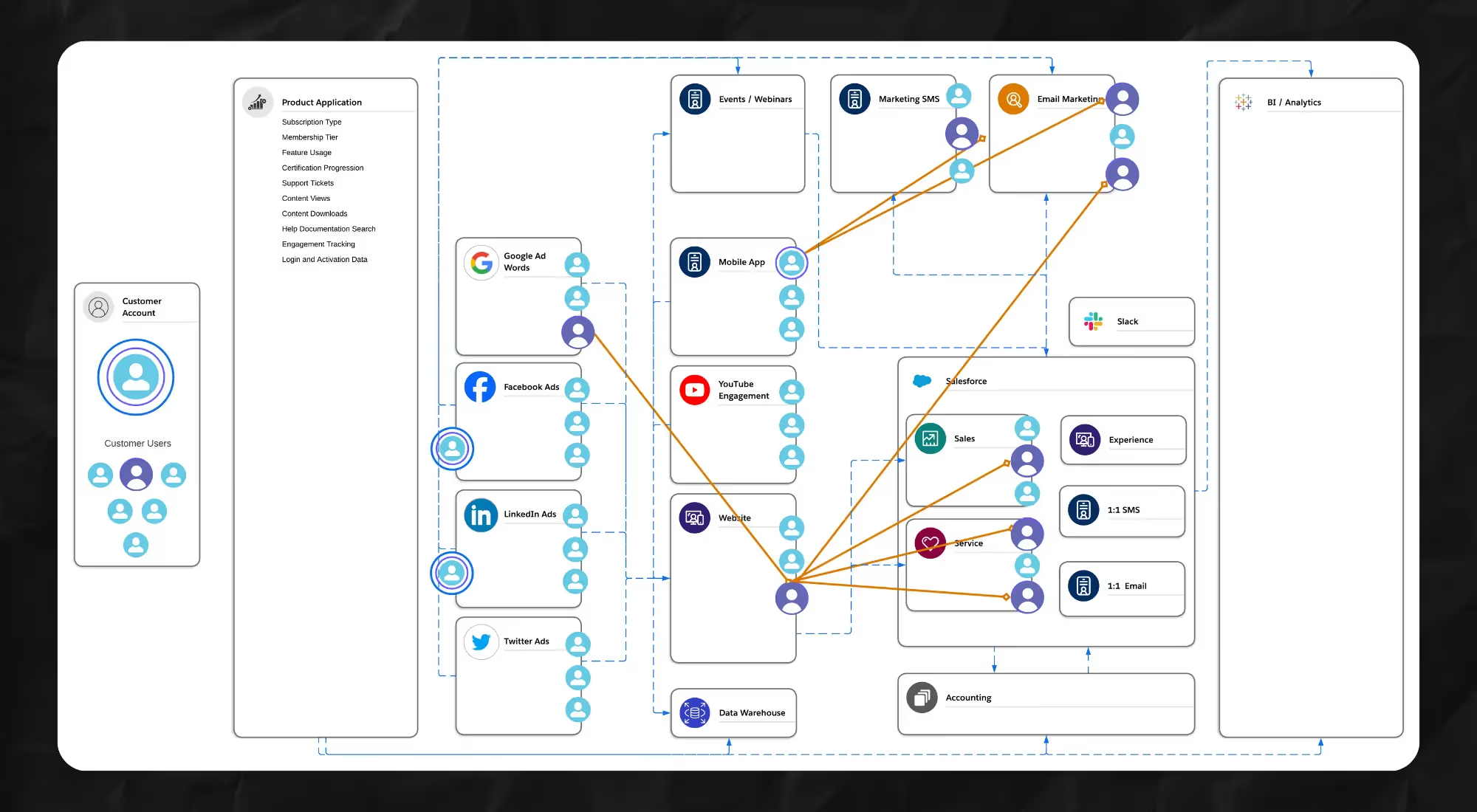
Adopting a PLG strategy can propel companies to new heights by leveraging the product itself as the primary driver of customer acquisition, expansion, and retention. However, many PLG companies face obstacles that can limit progress and affect overall efficiency.
Among the most significant challenges PLG companies encounter are siloed data, limitations inherent in Data Lakes, and IT bottlenecks. These issues can hinder a company's ability to be truly data-driven and proactive — impacting everything from predictive analytics to seamless integration across marketing, sales, and customer service functions.
Understanding and addressing these challenges is crucial for PLG companies striving to optimize their operations and drive sustained growth.
It’s hard for PLG companies to be proactive and data-driven when demographic data, company information, engagement data, campaign data, and product usage data all live in different places. Without high quality data sets, it can be difficult to drive accurate predictive analytics or create automation that takes action on those data insights.
A Data Lake is a centralized repository that allows you to store all your structured and unstructured data at any scale. Data Lakes are particularly useful for organizations that collect vast amounts of data from various sources and need a way to store and process it for later use.
If all of your data is centralized in a Data Lake, it’s often difficult to operationalize the information. Data Lakes typically require programmatic knowledge to organize and segment data. Incorporating this information into marketing, sales, and service work streams can be difficult and time consuming due to complex and maintenance-heavy integrations.
IT resources very rarely scale proportionally to other business units as a company enters its growth phase. PLG companies often struggle to reduce barriers for non-technical staff so they can use the data they need for personalization, segmentation, and automation.
PLG companies need powerful tools to stay ahead of the competition in an increasingly customer-centric market. Salesforce Data Cloud offers a comprehensive data management solution that unifies all your data within Salesforce and external sources, and provides actionable insights.
By leveraging Data Cloud, marketing, sales, and service teams can enhance their operations, drive better outcomes, and support the core objectives of a PLG strategy. From improved segmentation and personalization to proactive user intervention and reduced churn, Data Cloud equips each team with the data they need to succeed and accelerate growth.
Let’s dive a little deeper into Data Cloud and how it can benefit marketing, sales, and service teams at PLG companies.
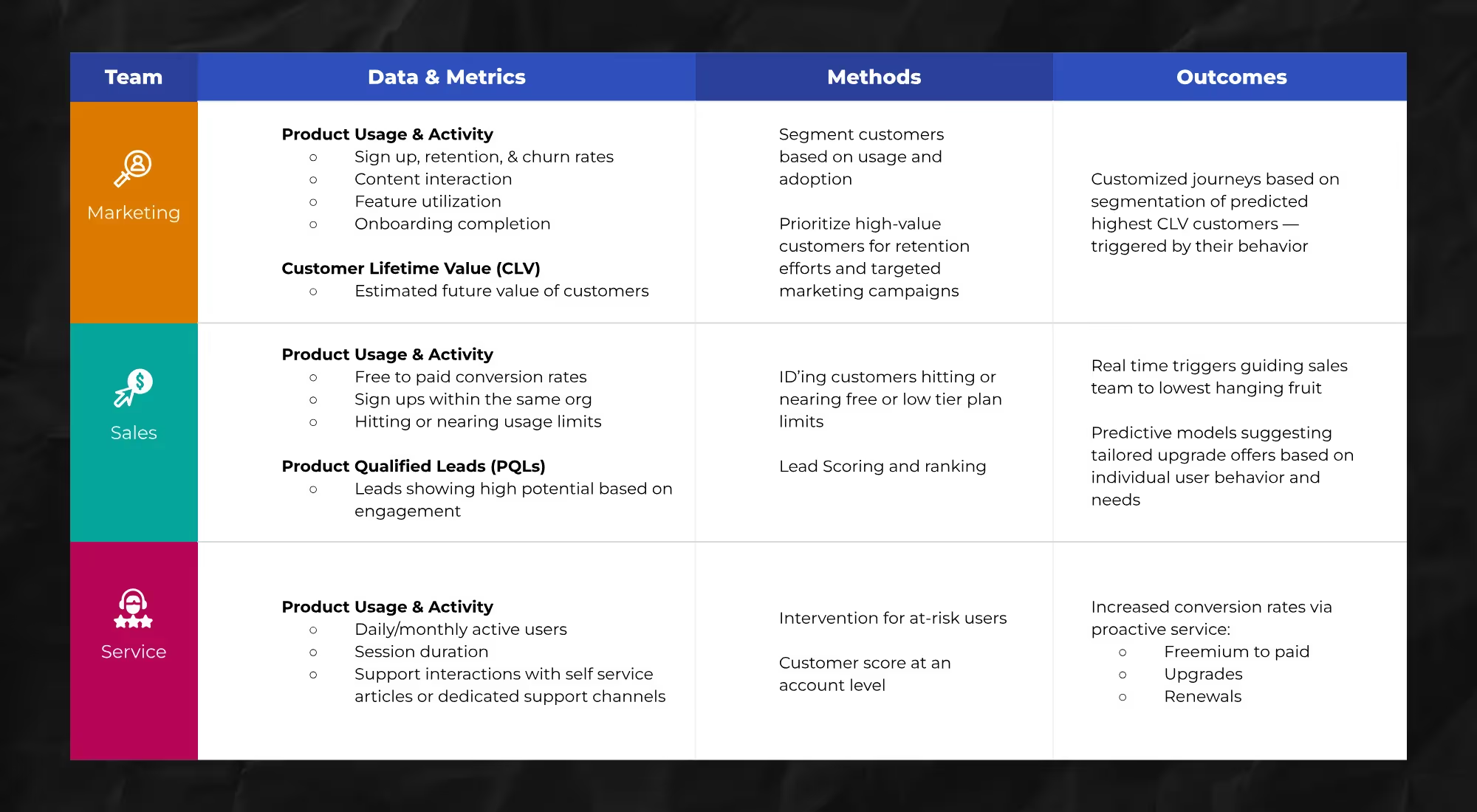
Salesforce Data Cloud is a comprehensive data management platform that allows you to unify your data on Salesforce without building complex data pipelines, easily take action on all your data across every Salesforce Cloud and external data sources, and enable trusted AI solutions powered by your data.
Data Cloud allows businesses to integrate, analyze, and act on data in real-time, driving more personalized and effective customer interactions. For PLG companies, this means leveraging detailed insights to enhance user experiences, streamline operations, and accelerate growth.
Leveraging Data Cloud can significantly benefit PLG companies by enabling marketing teams to access and utilize critical data effectively. Here's how:
Data Cloud allows marketing teams to segment customers based on various metrics such as sign-up rates, retention and churn rates, content interaction, feature utilization, and Customer Lifetime Value (CLV). By having a unified view of this data, marketers can benefit from:
Personalization is crucial for retaining high-value customers and driving engagement. Data Cloud aids in:
By integrating data from Salesforce and external sources (like social media and ad platforms), Data Cloud provides a holistic view of the customer journey:
Data Cloud can be used to connect marketing, commerce, sales, service, revenue, and campaign performance data into unified profiles that marketers can then use to create target audience segments.
Using unified data from Data Cloud, marketers can create personalized marketing campaigns tailored to each segment. For example, send targeted emails with special offers or tips on how to use the product more effectively to at-risk customers.
Salesforce's capabilities are highly beneficial for companies employing a PLG strategy, as it empowers sales teams with critical data and metrics such as free-to-paid conversion rates, sign-ups within the same organization, and users hitting or nearing usage limits. These metrics are crucial for understanding user behavior and identifying growth opportunities.
Data Cloud allows businesses to unify and harmonize this data into a single, comprehensive profile based on user-identified identity resolution rules. This unified data provides a more complete and accurate picture of each customer, enabling sales teams to:
Reduce Churn: By identifying customers who are hitting or nearing the limits of their free or low-tier plans, sales teams can proactively reach out with appropriate upgrade offers or solutions to retain them.
Utilize Lead Scoring & Ranking: With a unified view of customer data, sales teams can better score and rank leads based on their behavior and engagement levels — ensuring that efforts are focused on the most promising prospects.
Guiding Sales Teams to Low-Hanging Fruit: Real-time data can highlight immediate opportunities, allowing sales teams to act quickly on the most accessible prospects.
Tailor Upgrade Offers: Predictive models can suggest personalized upgrade offers based on individual user behavior and needs, increasing the likelihood of conversion and enhancing the customer experience.
With Einstein 1 for Sales (formerly Unlimited Edition+), not only do you have access to Data Cloud, you also gain access to powerful AI features such as Einstein Copilot, Einstein Lead Scoring, Sales Engagement, Einstein Relationship Insights, and more.
By leveraging these capabilities, PLG companies can drive more efficient and effective sales processes, leading to higher conversion rates, reduced churn, and accelerated growth.
Data Cloud for service teams is highly beneficial for companies following a PLG strategy. By unifying critical data from Salesforce and external sources such as product usage, user activity, daily/monthly active users, session duration, and self-service data from support interactions, Data Cloud provides businesses with a holistic view of customer engagement.
Having access to unified data from Data Cloud empowers service teams to make informed decisions and take timely actions — ultimately enhancing the PLG approach in several ways:
Proactive User Intervention: With unified data, service teams can identify at-risk users based on their product usage patterns and engagement levels. By intervening at the right time, they can address issues before they escalate, improving user satisfaction and reducing churn rates.
AI-Powered Scoring: Data Cloud leverages AI to provide scoring at an account level, enabling service teams to prioritize efforts on accounts that are more likely to churn or those with high conversion potential. This targeted approach ensures that resources are allocated effectively.
Enhanced Self-Service Options: Unified data insights enable the creation of proactive self-service options (chatbots, knowledge articles, etc.) that are tailored to users' needs. This not only helps in guiding freemium users to paid plans but also facilitates seamless upgrades and renewals, driving revenue growth.
Increased Conversion Rates: By understanding user behavior and preferences through detailed data analysis, service teams can craft personalized strategies that resonate with users. This personalization increases the likelihood of converting freemium users to paying customers and encouraging existing customers to upgrade or renew their plans.
AI-powered chatbots can be used for self-service to help answer questions, guide users to a knowledge article, or route the case to the right service agent. Chatbots can easily create a case and direct a customer to a knowledge article while logging the case in Salesforce — improving case deflection rates.
This data will be mapped to Salesforce, providing service teams with valuable insights into the user journey and pain points. This data can then be used to create enhanced user experiences.
Data Cloud's ability to unify critical data enables service teams to act strategically and efficiently, supporting the core objectives of a PLG strategy: driving user engagement, reducing churn, and fostering growth through data-driven insights and proactive measures.
The beauty of the Salesforce platform is that it helps reduce complexity (and your tech stack) by consolidating all of your sales, service, and marketing platforms into one. Having data siloed in different systems creates a fragmented experience for users, which is exactly the opposite of what PLG companies aim to achieve.
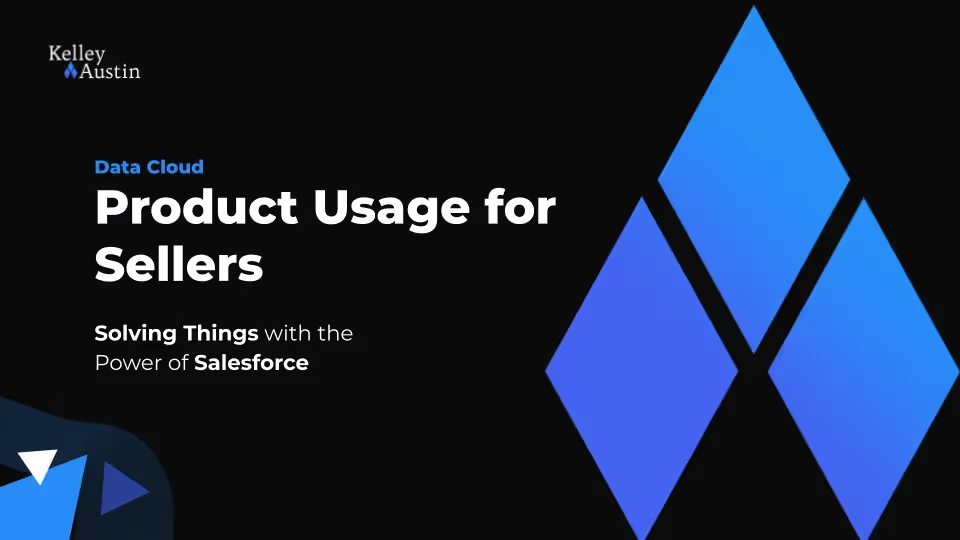
Whether you have a single Salesforce PLG use case in mind such as implementing a pop up window to entice users to upgrade their plan or you have a more extensive PLG project that spans multiple Salesforce products, we’re here to help you get started. It’s up to your organization what Salesforce PLG strategy or solution is right for you
Data Cloud is a powerful ally for PLG companies, providing the data-driven insights needed to drive user acquisition, retention, and expansion. By leveraging the capabilities of Data Cloud, PLG companies can enhance their marketing, sales, and service efforts — ultimately achieving faster and more sustainable growth.
As PLG continues to reshape the B2B SaaS landscape, embracing tools like Data Cloud will be crucial for staying ahead of the competition and delivering exceptional product experiences.
To learn more about how Kelley Austin can help you solve your PLG initiatives with Salesforce, get in touch with our team and tell us your goals and vision for product-led growth transformation.
At Kelley Austin we're proud to provide tailored Salesforce solutions across a variety of industries. Our expert knowledge and many years of experience in all aspects of the Salesforce ecosystem have earned us high levels of satisfaction from our clients.
We're ready to find the right solutions for your industry today.